by Joshua Thomas
A timing light is basically a device that is used to make sure the ignition timing on the engine is spot on so as to optimize on providing maximum engine power output.
Basically, it incorporates the use of a sensor, which detects the electrical pulses going to the spark plug on the first combustion chamber, and powers up a strobe light that matches these pulses.
This light is then pointed towards a mark on the harmonic balancer located on the front part of the engine to show the degree of timing as you make any adjustments by turning the distributor.
Being quite a complex tool, it is important that you pick the best timing light so that it helps you make accurate adjustments without messing up your engine, and here are 7 best ones that you can get in the market.
Contents
| IMAGE | PRODUCT | FEATURES |
|---|---|---|
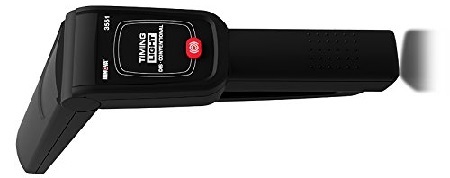 | 1. Innova 3551 (Best Overall) |
|
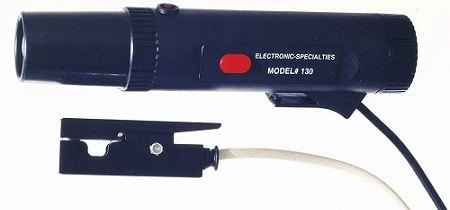 | 2. Electronic Specialties 130 |
|
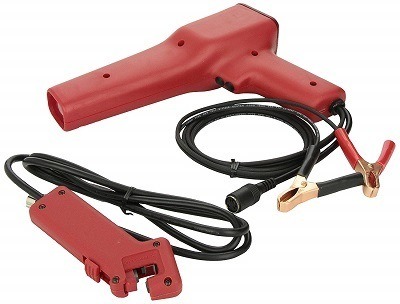 | 3. MSD 8992 |
|
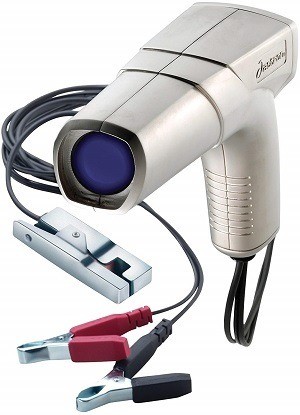 | 4. Actron CP7529 |
|
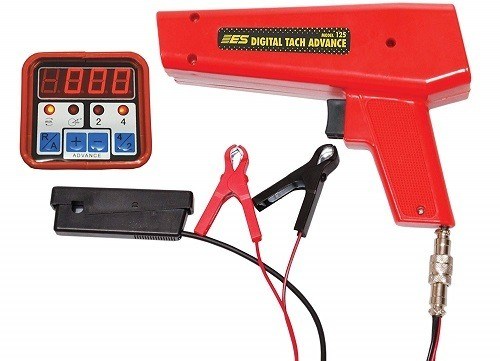 | 5. Electronic Specialties 125 |
|
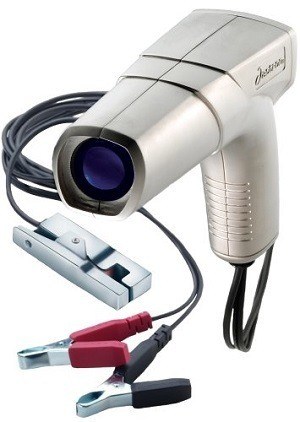 | 6. Actron CP7527 |
|
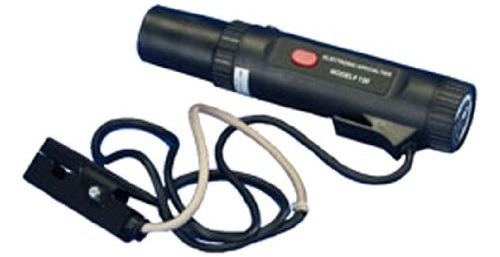 | 7. Sierra International 18-9802 |
|
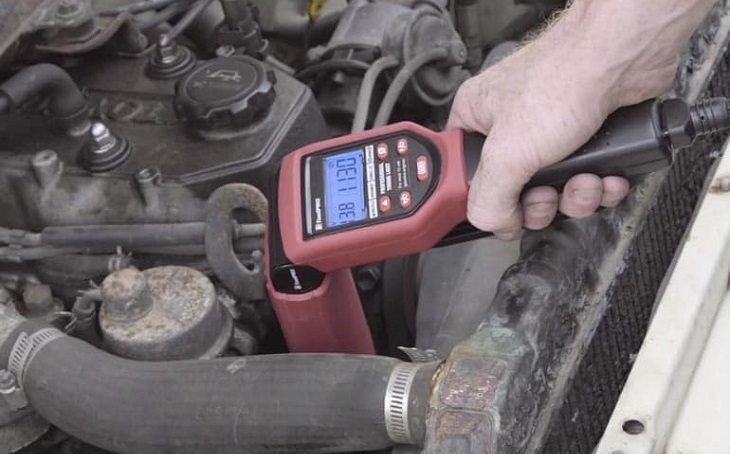

There are 4 varieties of Innova timing lights, with the most basic model (3551) being an affordable entry-level unit that simply syncs the lighting with the input from the inductive sensor.
The 3555 is slightly more expensive but it features a direct reading advance dial, which adjusts from 0-60° so as to check for base, advance or retard timing. After this, comes the digital 3568, which features a split screen LCD display for showing the RPM and digital advance.
Innova's Digital Pro ( 5568) is the most advanced unit in this lineup, displays a tachometer (249-9990 RPM) plus a digital advance (0-90°) just like in the 3568, but adds on the dwell (2-12 cylinders from 0-180 degrees) and voltage (10-16 volts DC) on its digital display.
Though quite costly, this Pro version also has a heavy-duty, shock-proof ABS plastic housing that is encased in a molded boot for additional protection against accidental drops.
All can work with DIS, electronic, conventional and computerized ignition systems, have detachable leads and inductive pickups, feature an adjustable barrel and a protective hand guard for single hand operation.
On the downside, only the high-end 5568 is capable of checking the timing in 2 cycle engines.
Pros
Cons


This ESI 130 stands out as a top automotive timing light due to its wide RPM range, in which it is accurate up to at least 14,000 RPM.
Additionally, the unit can be used on both 2 and 4 cycle engines, as well as on all types of ignition systems, ranging from DIS, conventional, electronic and computerized types.
Being an analog timing light, the 130 does not have a digital display, but it has a very powerful flash that brightly lights up at all speeds to enable you to view the degree of timing easily on the rotating harmonic balancer as you rev up the engine.
Another desirable feature that this product has is that it is self-powered, requiring a pair of D batteries, which are included. This means that there's no need for connecting it to
Pros
Cons


MSD's 8992 ignition timing light is quite an expensive product but it has the features to show for it.
For instance, it is made with a solid-state circuitry inside and utilizes a silicon-controlled rectifier to provide stable and accurate timing signals at a range of 0-8000 RPM. These signals are then converted to light via an intense strobe, which is easier to see even in broad daylight.
Other than this, the unit has a lightweight injection-molded construction that is tough and very durable.
More features include a detachable inductive pickup and leads for easy storage, and color-coded plus insulated battery clamps for safety.
Pros
Cons


For a digital timing light, the CP7529 from Actron stands out due to a number of reasons. For starters, it features a microprocessor-controlled circuitry that makes the readings displayed on its screen very accurate.
The unit is also highly compatible, with the capability to work with 2 and 4 cycle engines, and multiple car ignition systems, ranging from conventional, electronic and computerized types.
That said, a digital LED display is included for reading out the tachometer from 0-9999 RPM and also indicates the advance to 1/10.
Below this screen are a few control buttons for switching between 2 or 4 cycle options, switching between RPM or advance display, and scrolling up or down.
Other features include a linear xenon flash tube with focused Fresnel lens for providing sufficiently bright light, an all metal inductive pickup and a durable ABS plated housing that protects the internal circuitry from damage in case of an accidental drop.
On the downside, this CP7529 does not display the battery voltage reading and its leads plus inductive pickup are not detachable.
Pros
Cons


Digital timing lights are always slightly advanced and more professional than their analog counterparts and this ESI 125 is no different. It is actually designed for precise tuning and diagnostic work.
Though only compatible with 12-volt electrical systems, the unit has a 2 and 4 stroke tachometer, which measures the engine speed up to 9,999 RPM. However, it is only accurate up to 9,000 RPM and uses a brilliant xenon flash to light up the harmonic balancer marking at all speeds.
Other features include a detachable and replaceable cable set for easy storage and a bright display that reads out the RPM and degrees advance.
On the downside, the unit does not show the battery voltage even though it has a digital display.
Pros
Cons


Actron's CP7527 has a similar design to its CP7529 digital sibling, with a durable gray ABS plated housing that protects the internal circuitry from damage in case of accidental drops.
Also included is a super bright xenon flash, an all metal inductive pickup and compatibility with 2 cycle engines, as well as conventional, electronic and computerized ignition systems.
However, this one does not feature a digital display, instead, it has a simple on/off touch control and is designed for simple standard base timing. Also, its leads and inductive pickup are non detachable, which slightly complicates the storage process.
Other features include a 12-volt DC power requirement and heat resistant moldings over the battery clips.
Pros
Cons


This is a relatively costly product from Sierra International but is also the top-rated timing light in this review, which shows it has some impressive features.
Though it lacks a digital display, the benefits you get is a self-powered timing light that requires 2 D-cell batteries and thus, is compatible with a wide variety of electrical systems in different cars. This also makes it very compact since battery clips are not included.
In all these types of systems, the unit is highly accurate up to 10,000 RPM, which means it is highly reliable.
Pros
Cons

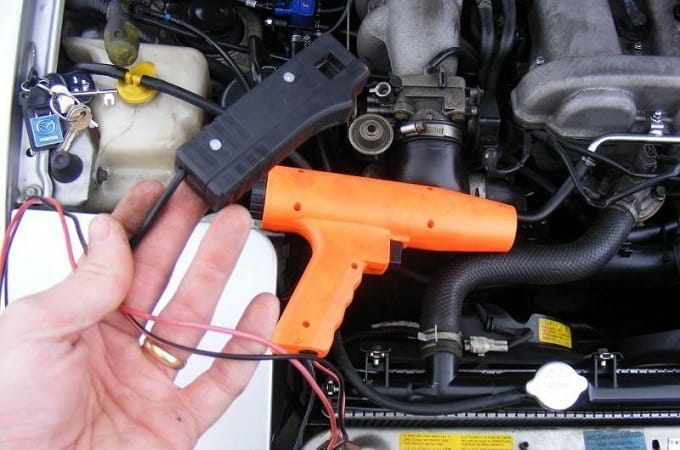
For a timing light to be any useful, it must be compatible with your car. In considering this factor, there are three things to look at. These are:
Voltage
A timing light must be powered and most of them have battery clips that need to be hooked up to the car's battery. However, just like other electronic devices, each unit is designed to handle a certain amount of voltage and this should match the car's battery or the car's electrical system.
This means that if the car runs on 12 volts and has a 12-volt battery, then you should buy a timing light that requires 12 volts.
Engine type
There are two main types of engines and these are 2 and 4 stroke engines. Most cars have 4 stroke engines but some motorcycles have 2 stroke engines.
A few advanced timing lights can be used to check the degree of timing in either type but others are specific to one engine type. It is best to buy the universally compatible light so as to avoid any issues, whether you are tuning your car or motorcycle.
Ignition system
Lastly is the ignition system. The best timing light should be compatible with all types, which include DIS, electronic, conventional and computerized ignition systems.
Inline
Inline timing lights are more difficult to use because you have to remove the number 1 spark plug before use. However, they are cheaper and eliminate the risk of electrocution.
Inductive
This type comes with a sensor that is connected to the wire going to the first spark plug, and it picks up the electric pulse inside, converting this into a strobe light. Though costlier than inline timing lights, inductive units are better in design and accuracy and are highly recommended.
Traditional timing lights use analog displays, which are simply gauges showing you the timing degree by shining light on the flywheel marks. Such displays are cheaper and reliable, but they require you to know how to properly read the timing gauge at both idle and total timing.
Digital display timers are better than their analog counterparts in many ways because they can perform extra functions, such as displaying tachometers, voltage readouts, etc. They are mostly used by professionals because they are easy to use.
There is a very high possibility of dropping a timing light while in use and for protection, it is recommended that you get a unit with tough outer cover materials.
This way, the electrical circuitry will be protected inside from any damages in case of these minor accidents.
For easy use, a timing light should be designed in such a way that it is easy to use and operate. Features to look for include, a microprocessor-controlled circuitry on the inside for high accuracy and multiple readout options (voltage, dwell, rpm) so that you get the most out of it.
Externally, it should have an ergonomic design, with features such as a protective hand guard for safety and an adjustable barrel for better aiming at the timing marks. Some of the best adjustable timing lights that give you such benefits include the Innova's range listed above.
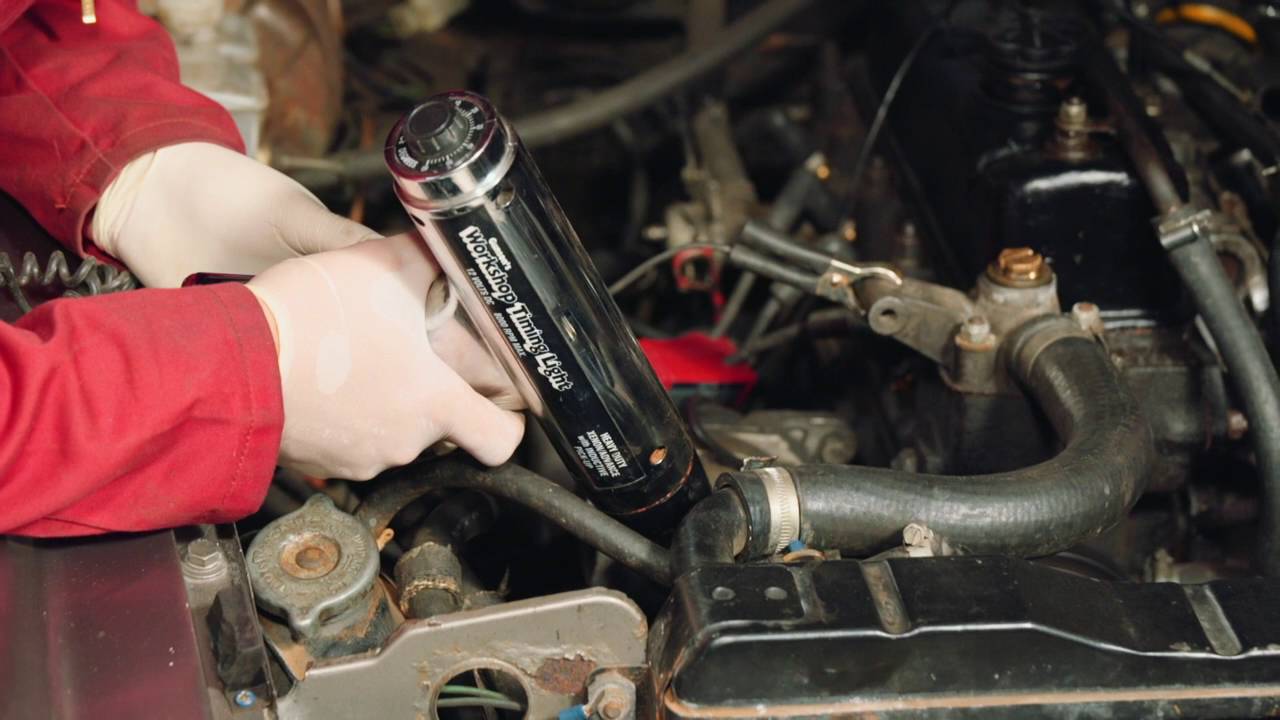
Here's a basic step-by-step guide on how to use timing lights.
1. Ensure the engine is off first to prevent any accidents.
2. Attach the clips to the battery terminals, with the red-colored clip going to the positive (+) terminal and black to the negative (-) terminal. If the timing light is self-powered, just fit in the required cell batteries and skip this step.
N.B: you must ensure that the timing light is compatible with the car battery's voltage so as not to over or underpower it, which might burn its circuitry inside.
3. Attach the inductive pickup to the number one spark plug wire.
4. Start the car and let it idle.
5. Shine the strobe light to the timing number marks on the harmonic balancer (flywheel).
Working Mechanism: the inductive pickup detects when power is sent to the spark plug from the distributor and lights up the flash based on this pulse. On pointing the flash to the rotating timing marks, one of the numbers should appear steady and this shows the degree of timing.
Innova 5568 Pro Digital Timing Light with Storage Case - Walmart Link
OBDMONSTER Ignition Timing Light, 12V Strobe Lamp Inductive Petrol Engine Timing Gun - Walmart Link
Performance Tool W80578 Self-Powered Timing Light , Black - Walmart Link
Actron CP7527 Inductive Timing Light 10.30 x 12.80 x 12.50 inches - Walmart Link
Engine Timing Light with Spark Plug Tester,Inductive Timing Light Gun Timing Light - Walmart Link
Houkiper Engine Timing Light Automotive,Xenon Ignition Timing Light Gun, Advance - Walmart Link
ESI 130 Self - Powered Timing Light - Walmart Link
Innova 5568 Pro Digital Timing Light with Storage Case - eBay Link
OBDMONSTER Ignition Timing Light, 12V Strobe Lamp Inductive Petrol Engine Timing Gun - eBay Link
Performance Tool W80578 Self-Powered Timing Light , Black - eBay Link
Actron CP7527 Inductive Timing Light 10.30 x 12.80 x 12.50 inches - eBay Link
Engine Timing Light with Spark Plug Tester,Inductive Timing Light Gun Timing Light - eBay Link
Houkiper Engine Timing Light Automotive,Xenon Ignition Timing Light Gun, Advance - eBay Link
ESI 130 Self - Powered Timing Light - eBay Link
If you have a gasoline powered car that was manufactured at least before the '90s, then proper timing needs to be maintained, and for this, you need the best timing light, which you can choose from the ones listed above.
However, newer car engines feature electronic ignition timing, which eliminates this whole manual timing process.
 |
 |
 |
 |

About Joshua Thomas
Joshua Thomas just simply loves cars and willing to work on them whenever there's chance... sometimes for free.
He started CarCareTotal back in 2017 from the advices of total strangers who witnessed his amazing skills in car repairs here and there.
His goal with this creation is to help car owners better learn how to maintain and repair their cars; as such, the site would cover alot of areas: troubleshooting, product recommendations, tips & tricks.
Joshua received Bachelor of Science in Mechanical Engineering at San Diego State University.